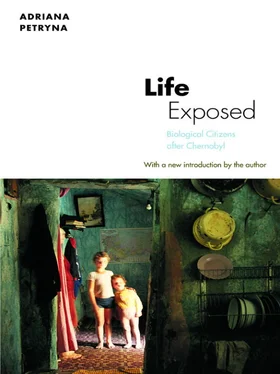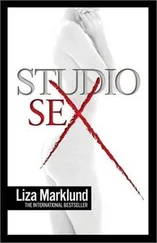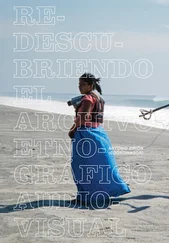“On the Social Protection of Citizens Who Have Suffered as a Result of the Chernobyl Disaster”, 230n.2. See also social protection acts
Palatyn, Evhen, 82, 83, 85, 86
Parliamentary Commission on Human Rights, 16
Parsons, Talcott, 89, 93
Pasichnyk, Mr., 65–66, 75
Pasternak, Boris, 223n.24
patients: as captives of new sociality, 165–74; changing relations between Clinic doctors and, 174–76; comments of regarding Kursk (Russian submarine) sinking, 217–18; dilemmas facing “father-patients” types of, 173–74; experiences of transformed from illness to disease, 153–54; four categories of Clinic, 154, 155; in utero research on Clinic, 184–90; marital difficulties suffered by, 195–96; of Pavlova, 131, 133–38, 140, 141–42; rentnyk stereotype of, 168, 172; self vigilance behavior of Clinic, 155–56. See also Anton; Chernobyl accident patients; medical documents; sufferers ( poterpili )
Pavlov, Ivan, 131, 176–77, 237n.24
Pavlova (hospital), 131, 133–38, 140, 141–42
pensions: current laws guarantees on amounts of, 232n.30; differences between disabled and average worker, 103; social protection acts providing, 24–25, 83–84. See also compensation ( kompensatsiia )
“Perinatal Loss and Neurological Abnormalities among Children of the Atomic Bomb: Nagasaki and Hiroshima Revisited, 1949–1989” (Yamazaki and Schull), 183
personhood ( lichnost’ ): Anton and Halia’s story on loss of, 193–201; as art of biosocial inclusion, 32; as Homo Sovieticus component, 193, 238n.3; impact of disability status on, 20; incalculable harm as basis of new, 31; psychological disorders due to loss of, 48; as Soviet category of mind, 200; subbotnyk (Saturday volunteer) as part of, 198. See also identity
Petrovska, 166–67
Petryaev, E. P., 53
Post-Radiation Encephalopathy: Experimental Research and Clinical Observations (Romodanov et al.), 158
prenatal brain damage research, 164–65, 185–86, 238n.36
prospective invalid, 35
Protas, 117
Prysyazhnyuk, A. Y., 9
psychiatry treatment, 175, 236n.22
psychological disorders: as category applied to sufferers, 11; division between patients with injuries and, 48; due to loss of personhood ( lichnost’ ), 48; research into radiation and long-term effects of, 235n.12 and 15; “social Chernobyl” and increase in, 61
psychosocial approach, 158, 159, 160–61
public policies: based on scientific knowledge, 10–11; biopower aspects of, 13, 14; full disclosure approach followed by Ukraine, 11; limited approach followed by Soviets, 11
Pylypko, 171, 172, 236n.21
Rabinow, Paul, 14
Radiation Biology Group (LBL), 56
radiation dose exposure: to bio-robots, 30; of Chernobyl region children, 221n.4; congressional mandate to monitor low-level, 58–59; disagreements regarding measurements of, 35–36; distribution of toxic effects due to, 226n.15; documentation showing proof of, 230n.4; economic incentives for, 86; false accountability and nul’-nul’ , 29–30; FISH technique to score, 59, 129, 228n.38; in food supplies, 85–86; International Commission on Radiological Protection standard on, 227n.28; isolated as contributor to etiology of illness, 161–62; norms of worker, 222n.8; psychological control of perceived risk of, 43; psychoneurological disorders and, 160; “Safe Living Concept” on threshold, 49; “semi-empirical model” formulated for, 40–41; sorting patients according to new threshold of, 41, 43, 120; Soviet vs. Ukrainian approach to, 23–24, 100; state interventions dictated by threshold, 229n.1; state reconstruction of population, 100; Ukrainian law setting threshold, 50; units/measurements of, 224n.33, 228n.40; VvD diagnosis in cases of maximum allowable, 43–44. See also ARS (Acute Radiation Sickness); irradiation
radiation protection problem: cost-effectiveness models and, 115–16, 117–18; evidence of excluded data regarding, 53–54; internationalization of, 48; interrelations of scientific, social, economic production in, 51–52; proposed “genetic protection” program for, 147; skarha mechanism and, 116–17; social acceptability levels model and, 115–17; Soviet vs. Ukrainian approach to, 100, 177–78
Radiation Research , 58
radiation research: Chernobyl as “living laboratory” of, 52; conducted after Hiroshima/Nagasaki, 8, 10, 53, 55, 165, 183–84; contributions of theoretical approaches to, 227n.36; deterministic vs. stochastic effects, 10, 100; examining ethical positions/social context of, 153–54; on in utero effects, 164–65, 184–90; Komarov’s experiments (1950s) on, 162; political contingencies/interest in, 162–63; radiation pathogenesis of organic personality development, 163–64; relations of clinicians and research subjects, 151–52; on Three Mile Island accident, 36, 37, 105, 160.’ See also the Clinic (Radiation Research Center)
Radiation Research Center (Kyiv): affiliation of with hospitals/clinics network, 130–31; ARS ward of, 121; commemoration of tenth anniversary of, 27; Division of Nervous Pathologies of, 34; as final claim authority, 130; interviews conducted in, 34; letters of advocacy sent to, 144; medical-labor committee of, 102–7, 126, 127; meeting on genetic protection program at, 147; personnel dispatched to disaster site by, 225n.14; research conducted in, 18–20, 151–54
Radiation Sickness in Man (Guskova and Baysogolov), 41, 120
radioactive fallout: adaptation of lesional/psychosocial approaches to interpreting, 158–60; Clinic integrated approach to interpreting, 157–61; DNA damage/repair after exposure to, 56–57; emergency measures to assess exposure to, 36, 225n.2; remediation models measuring particles released in, 115–18, 116 t ; Soviet-American bioscientific collaboration report on, 38–39
radioactive iodine-131 exposure, 1–2
radiophobia, 160, 177–78, 224n.34, 235n.10
“radioprotectors”, 83
Reisner, Yair, 44
rentnyk stereotype, 168, 172
Repkin, Mr., 145, 146, 147, 148, 195
resettlement: disability among evacuee sufferers, 102 fig ; incentives for contaminated area, 222n.13; of Ivanivna’s family, 88; of population from contaminated territories, 82; Ukraine’s inheritance of radiation-exposed population and, 99
resources: available through sviazi po boleznei , 102, 103, 110; available to workers in the Zone, 93–94; blat to access, 118; lack of, 92, 94, 97, 105–6, 196; scope/benefits included in compensation, 230n.5; social reconstruction of health to gain, 218–20; sufferer compensation/pension/benefits as, 85, 92–101, 105–7; Ukrainian state role as giver/taker of, 118
Rheinberger, Hans-Jorg, 26, 32
Romanenko, Anatolii, 43, 44, 224n.34
Romodanov, A. P., 158
Safe Living Concept: incorporated into Ukrainian laws, 49–50; international confirmation of, 53; regarding threshold radiation dose, 49; as Ukraine phenomenon, 18
Sandoz Corporation, 45, 46
Scheper-Hughes, Nancy, 203
Schull, William J., 183
Science, 55
science-as-human-progress paradigm, 27
scientific knowledge: Chernobyl aftermath as experimental system for, 25–27; Chernobyl’s legacy to, 51–52; used to circumscribe what can never be known, 32; expert regimes manipulation of, 166–67; general populations and absolute model of, 63; life sciences revolution recasting of, 14–16; as novel cognitive procedure, 28; used by patients to improve situation, 137–38; political contingencies/interest in production of radiation, 162–63; provided through theoretical approaches, 227n.36; public policies based on, 10–11; response to imported Western biological, 157; role in compensation/social justice decisions, 16; role in risk group categorization of, 16; shift from limited to open accessibility, 28–29; Western lesional and psychosocial standards, 157–60. See also biopower
Читать дальше












